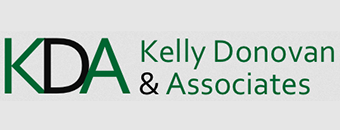It can be awkward when you’re being introduced to someone in a networking capacity as part of your job search. This is also where a lot of job seekers, even executives, miss out on potential opportunities because of how they approach the introduction.
Try to put yourself in the other person’s shoes (and chances are you have been in that situation before!).
If you’re in a leadership role at a company and your friend Tom is introducing you via email to his former co-worker, John Doe, how would you feel if John Doe said one of the following to you:
- “Hi–I can’t wait to hear about what job openings your company has since I really want to work there!”
- “I’m so happy to get connected with you! My resume is attached. I’m interested in a director role in supply chain management.”
For some recipients, this feels awkward. If the employer doesn’t currently have any relevant openings, that could be the end of the conversation. On the other hand, if there are openings, but the recipient isn’t sure whether John Doe would be the best candidate, her or she might be worried about offending John Doe or offending the mutual contact.
Now what if John Doe simply said he’d be interested in asking you some questions about trends in your industry–10 minutes max? That might feel less intimidating. And then based on the conversation, you might be able to figure out that he actually is an ideal candidate for an opening, and at that point you could invite him to interview for it (or refer him to the hiring manager).
We can think of this as a relationship-building approach.
On the other hand, some executives and managers like the transparency of saying upfront that you’re interested in jobs at their company.
A compromise could be to take a relationship-building approach, while still expressing an interest in the company in a way that’s not aggressive or intimidating.
There’s no right or wrong way, and the way you choose won’t necessarily be the best approach for every person. You’ll have to do what feels right to you in each situation.
Here’s what feels right to me — and what has worked well for many of my clients.
How to navigate networking introductions with grace:
- Indicate an interest in chatting with this person and don’t emphasize a job as the objective
- Don’t expect too much of their time, and be respectful of their time
- Avoid sending your resume (until or unless they ask for it)
- Build a relationship before asking for anything; develop a rapport
- Talk in person or by phone instead of email (email is OK for arranging a time, though)
- Be ready to describe your ideal employer and ideal roles; this will give them a better idea of who they can introduce you to
- The other person may offer to help in some way without being asked; if they don’t offer to help in some way, but you developed a good rapport, you could ask if they’d be able to introduce you to someone at a particular company (or companies) of interest, or ask if they know any companies that might be a fit for you based on what you’ve described
- You can connect on LinkedIn; and then if they happen to be connected to any people at companies you’re interested in, you’ll be able to see that when you do a search for people who work at the company
For tips #7 and #8 to work, you will need to have a “targeting list” of companies you’re interested in working for. This enables you to have a proactive game plan for your job search instead of just waiting for recruiters to contact you or perusing job boards.
Someone can actually understand how to help you if you say “I’m interested in sales executive roles at CPG companies; who do you know at Nestle, Kraft Heinz, or Kellogg?” versus “I’m open to anything, any industry…let me know if you hear of anything!”
This article appeared first on KellyDonovan.com





